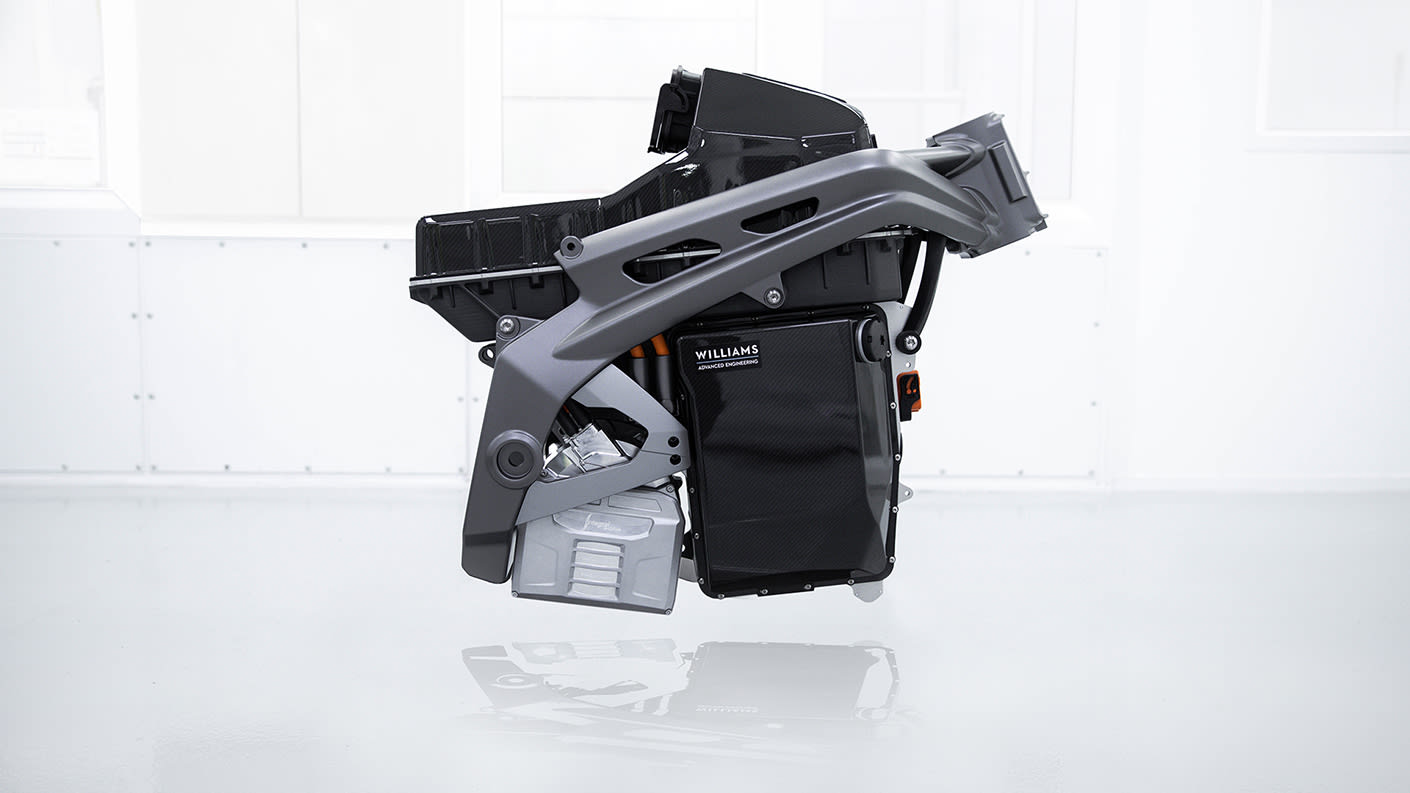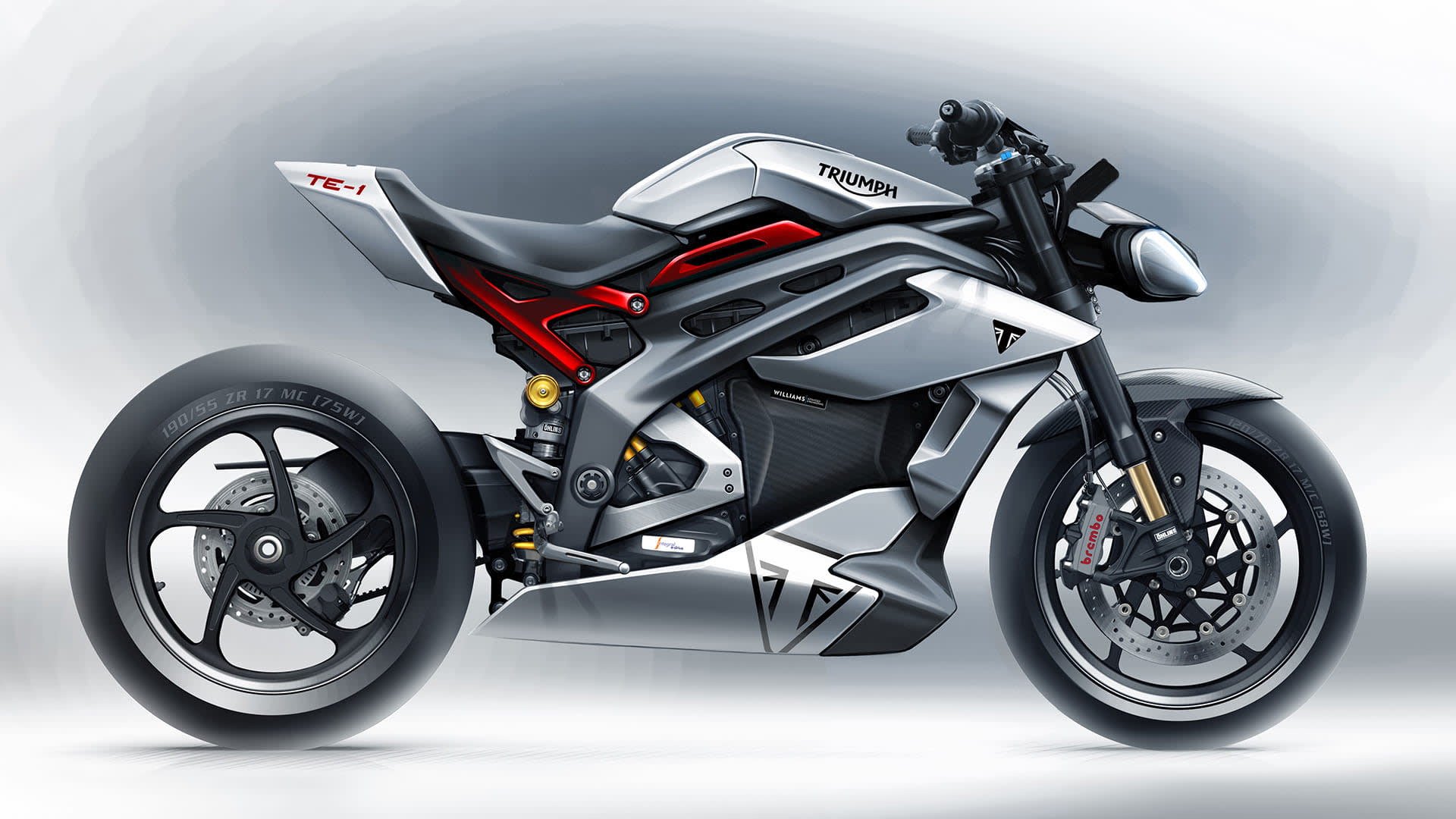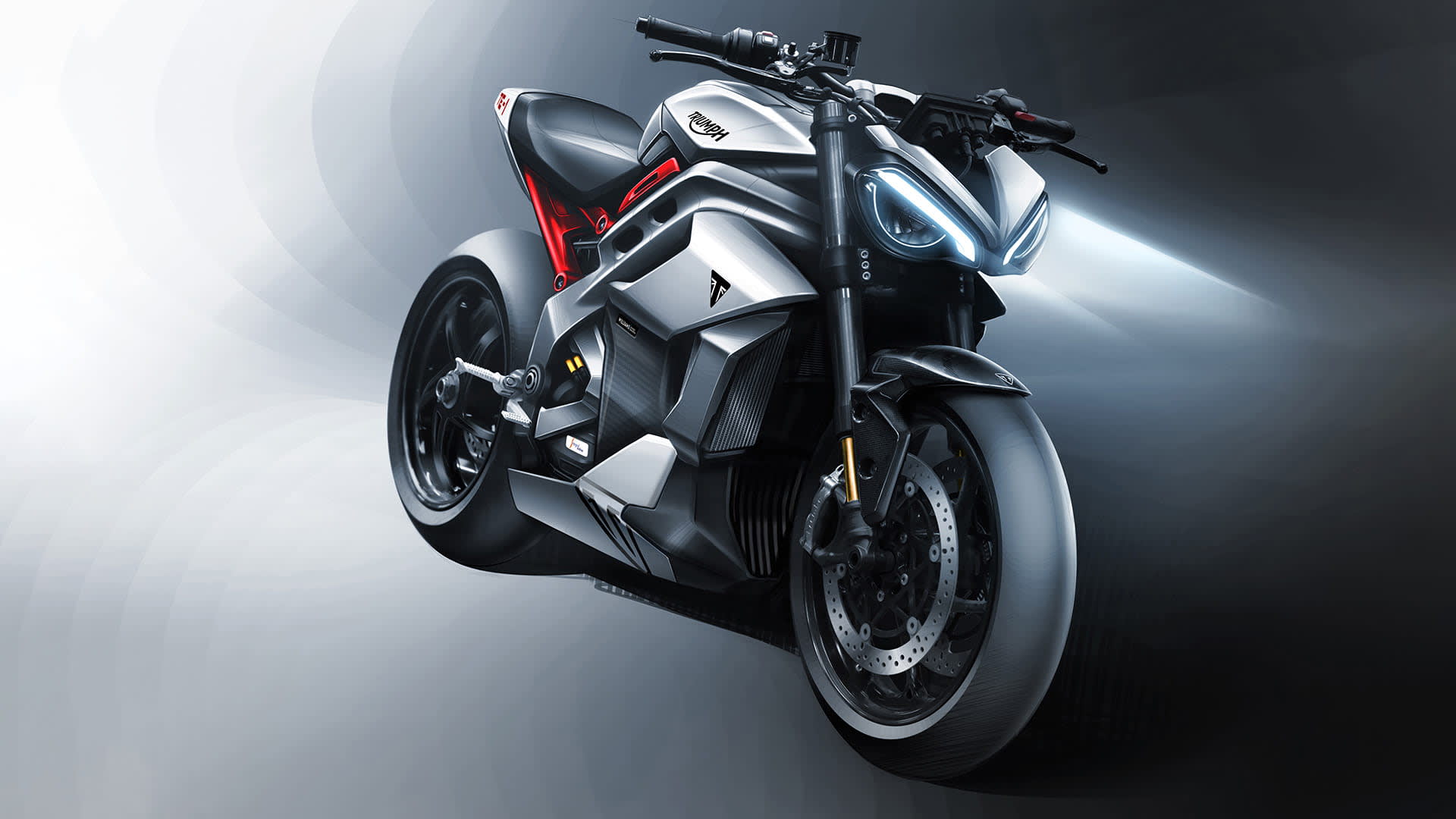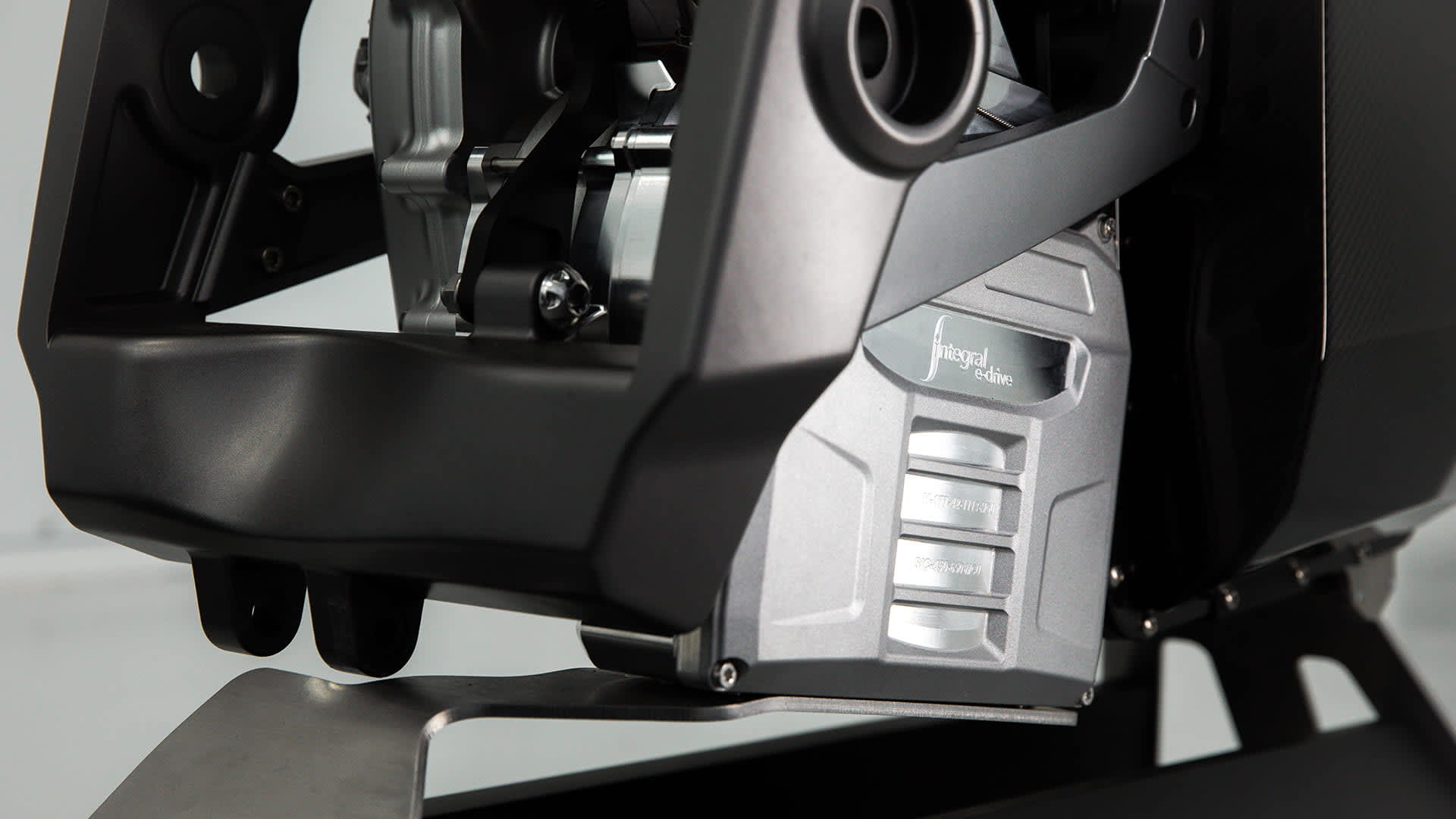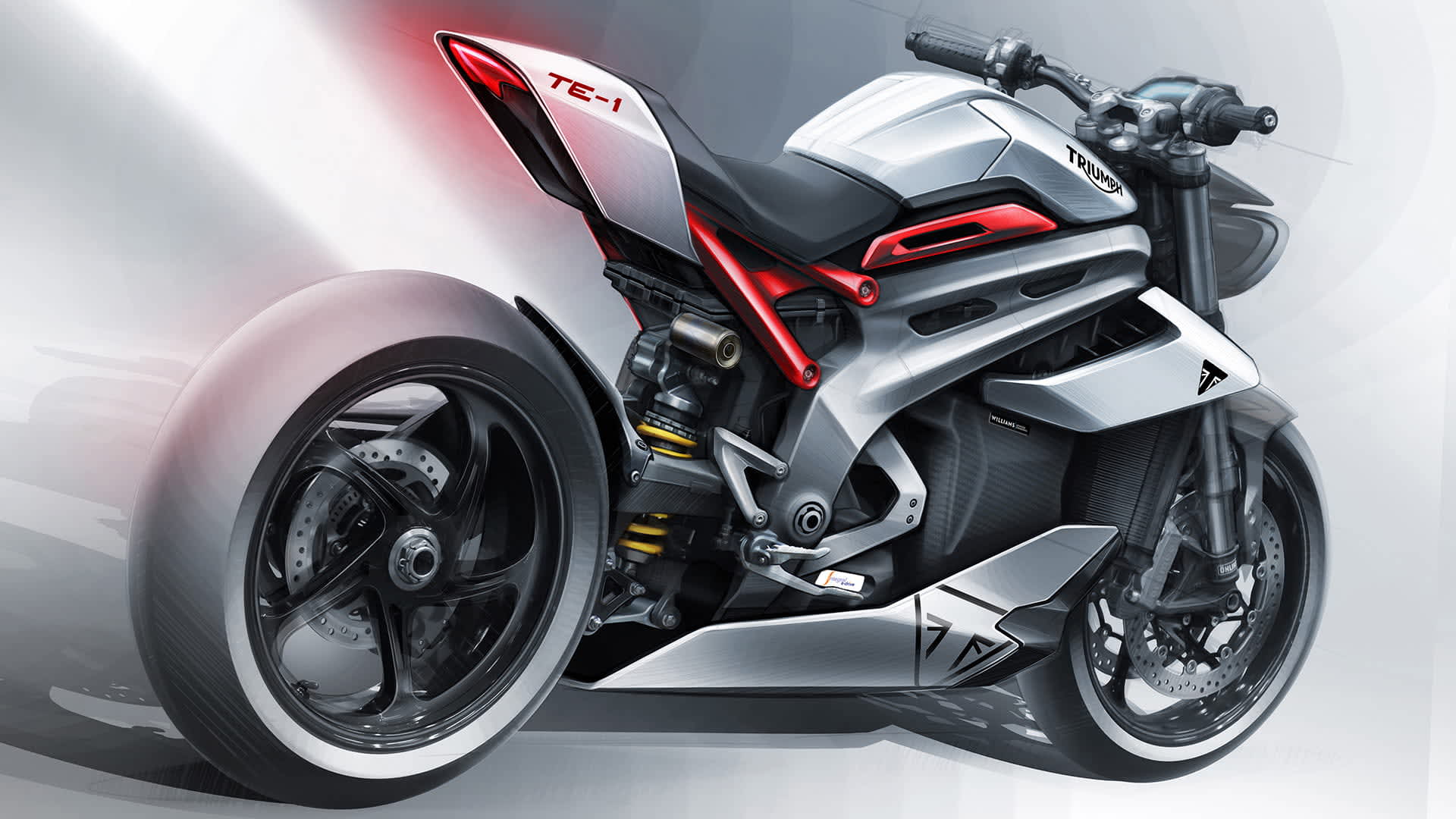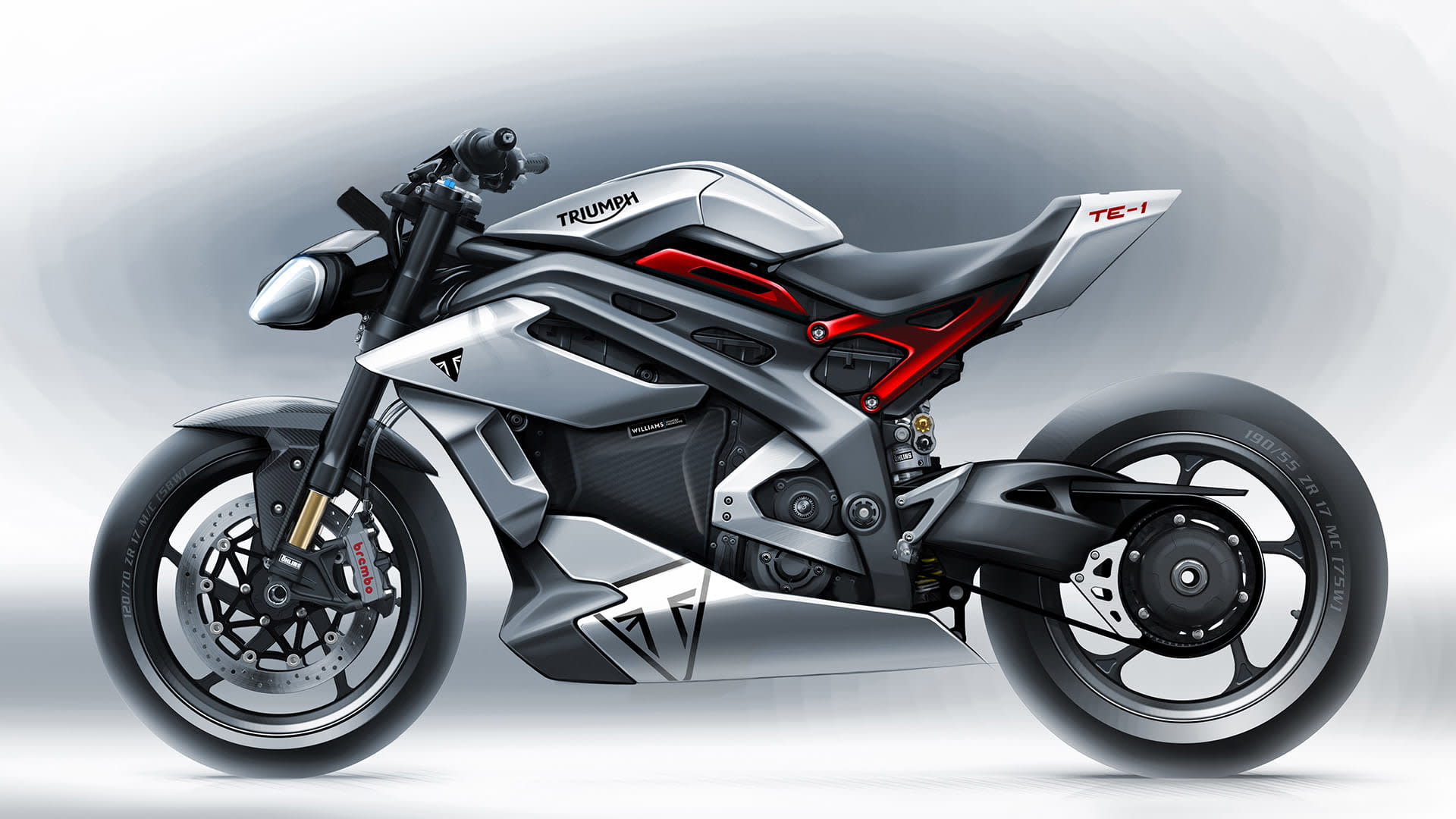PROJECT TRIUMPH TE-1
CREATING UK ELECTRIC MOTORCYCLE CAPABILITY
PHASE 2 – POWERTRAIN PROTOTYPE
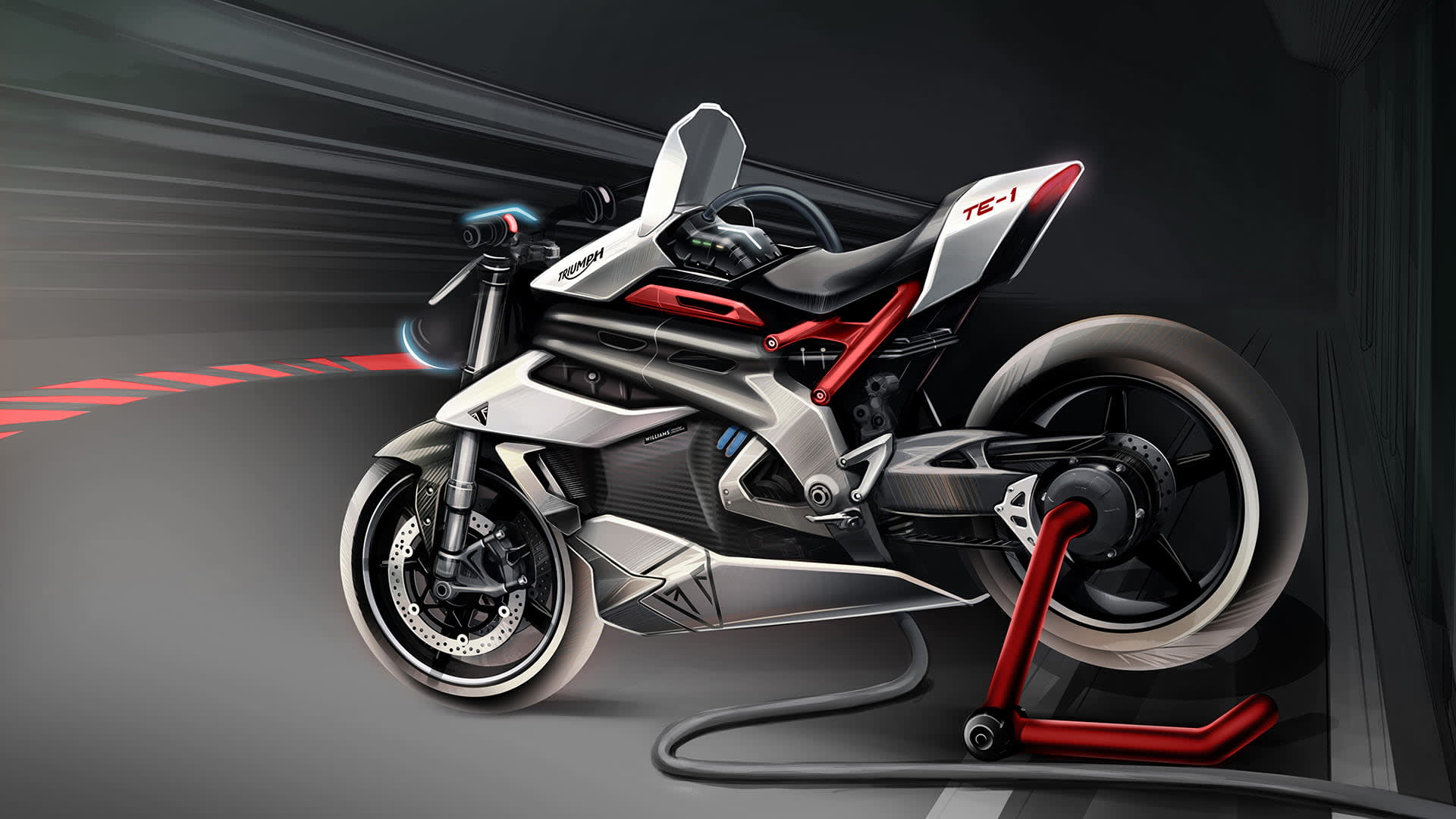
With the exciting reveal of the innovative advanced electric powertrain and battery and the first styling sketches for the final Project TE-1 Prototype, Phase 2 of this landmark four phase collaboration in British design and engineering reaches a successful conclusion.
Delivering on the objectives announced at the start of the TE-1 project in May 2019, focused on developing specialist electric motorcycle technology and innovative integrated solutions, this unique collaboration between Triumph Motorcycles, Williams Advanced Engineering, Integral Powertrain Ltd, and WMG at the University of Warwick funded by the Office for Zero Emission Vehicles, has already achieved significant results.
Including innovation in battery and powertrain design, initial test performance results far exceed the current benchmarks and industry targets. Developments in performance, efficiency and range is enabling Project TE-1 to fully deliver the partnership’s objectives to enhance the credibility and profile of British industry providing substantial input into future electric motorcycle strategy from Triumph.
Announcing the completion of Phase 2 - with the reveal of the battery and powertrain prototype, initial high level performance results, and the first design concept drawings for the Project TE-1 Prototype motorcycle that will be created at the end of the next phase.
Key project achievements to date include test results that show significant innovation in mass, battery technology, and powertrain performance that exceeds the target set by the UK Automotive Council for 2025, meeting the project’s ambitious objectives to deliver genuine innovation for a new standard in fully usable electric motorcycle performance.
Project TE-1 is a unique collaboration between four major UK industry and academic leaders – Triumph Motorcycles, Williams Advanced Engineering, Integral Powertrain Ltd.’s e-Drive Division, and WMG, at the University of Warwick.
The objective of this two-year project is focused on developing electric motorcycle capabilities – providing an input into Triumph’s future electric motorcycle offer, driving innovation, capability and new intellectual property, enhancing the credibility and profile of British industry and design.
Project TE-1 is funded by the UK Government’s Office for Zero Emission Vehicles (OZEV), and delivered through Innovate UK.
“This important project will provide one of the foundations for our future electric motorcycle strategy, which is ultimately focussed on delivering what riders want from their Triumph."
“The completion of Phase 2, and the promising results achieved to date, provide an exciting glimpse of the potential electric future and showcase the talent and innovation of this unique British collaboration. Without doubt the outcome of this project will play a significant part in our future efforts to meet our customer’s ambition and desire to reduce their environmental impact and for more sustainable transportation.” said Nick Bloor, Triumph CEO.
PROJECT TE1 – PHASE 2 OUTCOMES: BATTERY AND POWERTRAIN PROTOTYPE
WILLIAMS ADVANCED ENGINEERING (WAE)
Based on the agreed specification, we identified appropriate cell technology and battery architecture to deliver the performance objectives. Using this as a framework, we then optimised the battery module layout to balance mass and positioning within the prototype chassis taking into consideration centre of gravity, space and relationship with the powertrain and charging approach.
In addition to the module layout, we have also developed a new and unique vehicle control unit which is integrated into the battery pack to minimise weight and packaging. In parallel, WAE has also created innovative battery management software to ensure power is delivered in relationship to battery performance.
The outcome of Phase 2 for WAE includes a fully bench-tested battery with performance results that exceeds anything else on the market in terms of Power and Energy Density.
“We are delighted to be working on this project, working to deliver next-generation battery technology and control systems. Within the current landscape, most electric motorcycle technology arguably delivers compromised performance at low levels of battery charge. By using a lightweight, compact solution we have been able to give the rider all of the performance all of the time (regardless of battery charge), and a class leading range. We have focussed on pushing the boundaries to reduce mass and optimise frame position to benefit handling. We have also pushed the limits of battery performance, balancing the design for acceleration and range, with simulations modelled on track-based riding. In other words, as aggressive as possible,” said Dyrr Ardash, Senior Commercial Manager, Williams Advanced Engineering. “The energy density of this new battery will be a significant step forward from existing technology giving the rider more power, for longer. WAE has also designed and developed an electronic control unit from the ground-up combining the battery management system with the bike control functions in one package. This is a first for this market, benefiting packaging and integration whilst optimising performance and range.”
INTEGRAL POWERTRAIN LTD.’S E-DRIVE DIVISION
Our experience in cutting edge motor and inverter design and manufacture has helped us to push this technology on to the next level for the TE-1 project. In Phase 1 we worked to integrate the normally separate motor and inverter into one single, compact, package. Integration reduces the mass and volume of the drivetrain by reducing additional boxes on the vehicle, mounting features, coolant pipework and heavy high voltage connections.
The innovative integration concept is also a fully scalable one, whereby the number of power stages can increase for larger diameter, higher torque motors for example. Combined with our state-of-the-art motor technology, we have seen very exciting results already, with the motor achieving a power density twice that of the target set by the UK Automotive Council for 2025.
We have also implemented advanced silicon carbide switch technology in the inverter, this reduces losses in the inverter and results in greater drivetrain efficiency, power delivery and range. At the end of Phase 2, we are proud to have built a fully operational, new, prototype motor that has been bench tested and is delivering on all aspects of performance.
“One of the most influential factors in how well a motorcycle handles and performs is mass, so at Integral Powertrain we have focused heavily on making a step change in motor and inverter design, removing heavy high voltage cables for example. This delivers a product that is significantly more compact and lighter than anything currently available on the market. The motor produces 130kW or almost 180 horsepower, but weighs only 10 kilograms, much lighter than existing technology and clearly a small fraction of the mass of traditional internal combustion engines.” said Andrew Cross, Chief Technical Officer at Integral Powertrain Ltd. “The silicon carbide switch technology in our new scalable integrated inverter will help set new standards in terms of electric motorcycle efficiency; application of this technology means a lighter weight overall with significantly more performance and range. In parallel, we have a very strong focus on design for manufacture and assembly activity, so that all this high motor and inverter performance can be offered cost-effectively. Ultimately, this is really going to be an industry-leading powertrain that will help define the future of electric mobility. With the TE-1 project we are proud to be part of this landmark project for British industry.”
WMG, AT THE UNIVERSITY OF WARWICK
At WMG we have been working closely with all the TE-1 partners during Phase 1 and 2 to develop representative models to simulate the systems of the bike including battery, motor and vehicle control. Initially this allowed us to validate the specification against the intended component selection by assessing performance criteria such as range and top speed with initial models. This has enabled Triumph to carry out software development at an early stage prior to hardware being built with thorough testing programmes to ensure that real-life testing can deliver on refinement. Most recently we have been conducting powertrain rig testing using the prototype IPT powertrain to ensure our simulations are accurate and to confirm that the motor functions within the system as intended. We have also been providing guidance to Triumph relating to future legislation, charging infrastructure and recycling strategies that will need to be implemented across future electric motorcycle platforms.
“Our creation of initial computer-based simulation models at the start of Phase 1 has been instrumental in ensuring that the component selection was appropriate to achieve the performance targets defined by the partners for the TE-1 Prototype. We have continued with this work across Phase 2 of the project, refining the models to a much more complex level to allow us and the partners to imitate further components on the bike such as braking, throttle, lighting and other systems and mimic real-world riding to provide development opportunities before components were fully designed. Additionally we have created a physical rig wired with all of the control units, in order to implement a design validation test programme to ensure the function of each section was within the allowable range.” said Truong Quang Dinh, Assistant Professor of Energy Management and Control Systems at WMG, University of Warwick.
TRIUMPH MOTORCYCLES
Throughout phase 2 Triumph have developed an all new advanced vehicle control software which incorporates all of the electrical systems to ensure intuitive throttle response, regen braking, traction control and all of the dimensions that a customer would expect from a high-performance Triumph motorcycle. Additionally, we have integrated leading functional safety strategies into this software, plus supported WMG in rig testing and have also fully developed the new prototype instrument display. Alongside this electrical and control system work, we have designed a brand-new prototype chassis including main frame and rear frame which have been optimised alongside the battery and motor packages which will be further evolved in Phase 3 into the TE-1 Prototype which will be used as a mule test platform in Phase 4. During this chassis development we have taken into account both the transmission design and the final styling of the TE-1 Prototype, the drawings of which we are pleased to reveal for the first time today.
Steve Sargent, Triumph’s Chief Product Officer said “The starting point for us in the TE-1 project was to gather important customer feedback about what riders really want from their motorcycles and understand how an electric motorcycle can provide the experience that riders desire. This includes considering the type of riding, range, feel and nature of power and torque delivery together with the ergonomics and bike controls. Taking all of this feedback into consideration we began the chassis design, focusing on bringing everything together on the TE-1 Prototype in a way that provides a riding experience that is exciting and new but ultimately familiar. We have begun to define the powertrain and battery interaction through the use of software refinement to deliver an exhilarating power delivery and throttle response, which provides great control and feels intuitive to the rider. Overall with the styling we wanted to create something that is fresh and exciting but a natural evolution of the Triumph brand. Something desirable in its own right, with distinctive Triumph DNA and definitely not something that is different just for the sake of being different. Pulling all of this together with the partners we are thrilled to see the progress of such an exciting demonstration vehicle which incorporates the cutting-edge technology needed to guide the strategy for the future roadmap of electric motorcycles from Triumph. The team are proud to be leading such an innovative, strong and dynamic project with a fantastic group of partners which ultimately should set British engineering and design rightly at the forefront of future 2 wheel design.”

